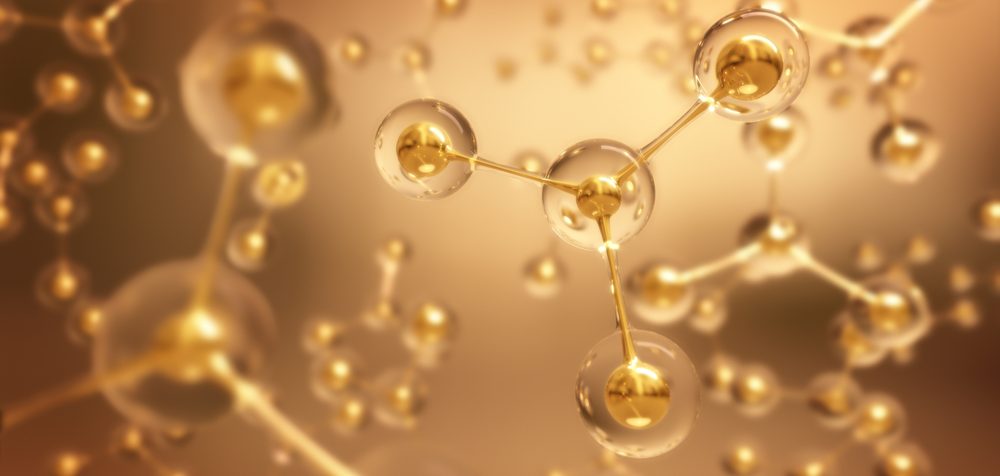
Researchers from Linköping University (LiU) are the first to create sheets of gold only a single atom layer thick. The new material – called goldene – has the potential for use in applications such as carbon dioxide conversion, hydrogen production, and the production of value-added chemicals.
To create goldene, the team of researchers used a traditional technique borrowed from Japanese metalsmiths called Murakami’s reagent, which etches away carbon residue. They used a three-dimensional base material with gold embedded between layers of titanium and carbon. Their new technique was essentially discovered by accident.
“We had created the base material with completely different applications in mind. We started with an electrically conductive ceramic called titanium silicon carbide, where silicon is in thin layers. Then the idea was to coat the material with gold to make a contact. But when we exposed the component to high temperature, the silicon layer was replaced by gold inside the base material,” said Lars Hultman, professor of thin film physics at LiU.
They discovered that the etching must be performed in the dark as cyanide develops in the reaction when it is struck by light, and it dissolves gold. Then, in order to stabilize the gold sheets and prevent them from curling up, they exposed the two-dimensional sheets to a surfactant.
Goldene’s unique properties are due to the fact that the gold has two free bonds when two-dimensional.
“If you make a material extremely thin, something extraordinary happens – as with graphene. The same thing happens with gold. As you know, gold is usually a metal, but if single-atom-layer thick, the gold can become a semiconductor instead,” said Shun Kashiwaya, researcher at the Materials Design Division at Linköping University.
The LiU researchers now have plans to investigate whether other noble metals would react in the same way as gold, and intend to identify additional future applications. Such applications could include: carbon dioxide conversion; hydrogen-generating catalysis; selective production of value-added chemicals; hydrogen production; water purification; and communications.
